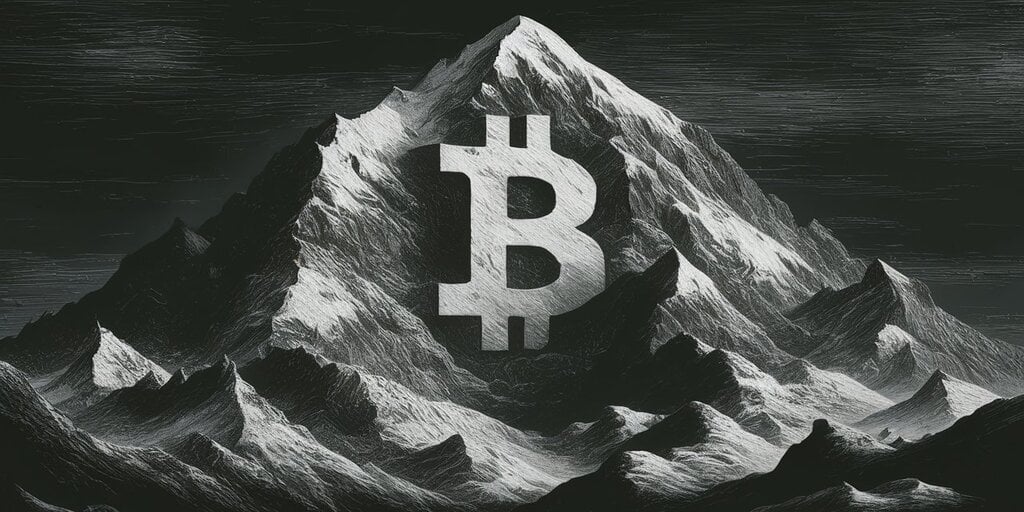Defunct Bitcoin exchange Mt. Gox has been preparing to repay creditors, more than a decade after the company went bankrupt. In recent weeks, the company has been gearing up to return billions worth of Bitcoin to users, and said recently that it started making some of those payments.
While that’s cause for celebration from impacted users, it has also prompted concern across crypto markets. That’s because many market participants are expecting the refunded Bitcoin to be immediately sold by creditors, as they’ve been out of pocket for over 10 years, waiting patiently as Bitcoin’s price skyrocketed during that span.
But a decade is a long time, and the droves of crypto users who came into the industry in recent years might not know the infamous tale of Mt. Gox. How did it go bust, and how will the Bitcoin refunds work? Here’s what you need to know.
What was Mt. Gox?
Mt. Gox was the world’s largest Bitcoin exchange at one point. Based in Tokyo, the company was estimated to account for 70% of Bitcoin trading volume in 2013. Mt. Gox CEO, Mark Karpeles, told Reuters in a now-deleted report that the exchange saw $5 million to $20 million in incoming transfers each day.
Launched in 2010, the site was originally an online marketplace to trade physical Magic: The Gathering playing cards; with Mt. Gox being a shortened version of “Magic: The Gathering Online Exchange.” Soon, the site added the ability to exchange cash for Bitcoin, moving away from trading cards for good.
Employees of the exchange had the option to be paid partially in Bitcoin, but Karpeles said that he stressed to not invest “more than you can afford.”
Bitcoin was extremely fresh at the time. It launched in 2009, but it wasn’t until 2010 that trading really began. Then in 2013, the cryptocurrency started the year valued at $13, climbing all the way to $1,100 by the end of the year. But with this rise to popularity for Bitcoin came regulatory nightmares for the world’s largest exchange.
How did Mt. Gox go bankrupt?
By the summer of 2013, Mt. Gox was accused by the U.S. Department of Homeland Security of failing to register as a “money transmitting business.” Due to this, $5 million of Mt. Gox funds were seized. Later in the year, the exchange’s partner CoinLab sued Mt. Gox due to it allegedly failing to fulfill the terms of their agreement.
In February 2014, the exchange disclosed that it had been the target of years’ worth of hacks that had gone unnoticed. Malicious actors were able to edit the IDs of transactions due to a Bitcoin vulnerability called “transaction malleability,” which has since been addressed through the 2017 SegWit soft fork. The vulnerability let bad actors manipulate the exchange without it noticing, apparently for years, and swipe customer funds all the while.
As a result, 850,000 Bitcoin was lost—almost 7% of all Bitcoin that existed at the time. This was worth $475 million at the time, but at today’s rate this would be worth over $49 billion.
While suffering the attack, the exchange went offline, causing Bitcoin’s price to dramatically drop. Investors grew angry and demanded answers. Karpeles then said that the exchange would “find a solution.”
Ultimately, that solution was to file for bankruptcy, citing liabilities of $64 million while only having $38 million in assets—a difference of $28 million. The firm had 127,000 creditors in the bankruptcy, according to a Reuters report, only 1,000 of which were based in Japan.
The Japanese bankruptcy filing then stated that Mt. Gox owes creditors $63.5 million. But the company wasn’t even halfway to having that amount of money, as $5 million of its assets were held by CoinLab as part of its at the time ongoing case. An additional $5.5 million was being held by the U.S. Department of Homeland Security.
“We will make all efforts to ensure that crimes are punished and damages are recovered,” Mt. Gox later said.
Creditor refunds explained
In 2023, the U.S. Department of Justice charged two Russian nationals with “conspiring to launder approximately 647,000 Bitcoin from their hack of Mt. Gox,” which happened in 2011. In this process, 140,000 Bitcoin was recovered—or over $8 billion worth at today’s price.
Now, over a decade after the exchange collapsed and following a number of deadline extensions, Mt. Gox creditors are due a refund. According to a June 24 note, creditors will start receiving payments in Bitcoin and Bitcoin Cash.
“We have taken time to ensure safe and reliable repayment to creditors, including technical remedies for safe repayments, compliance with financial regulations in each country, and discussion of repayment arrangements with the cryptocurrency exchanges,” Mt. Gox Rehabilitation Trustee Nobuaki Kobayashi said in the note.
Since then, Mt. Gox has moved billions of dollars worth of Bitcoin between wallets as it prepares to execute refunds before the October 31 deadline. At the time of writing, an Arkham Intelligence identified that Mt. Gox’s wallet holds over $8 billion worth of Bitcoin.
Mt. Gox began making repayments on July 5, according to a note from the rehabilitation trustees, while noting that the process will take time to confirm all eligible creditors’ details. “We ask eligible rehabilitation creditors to wait for a while,” the note reads.
Edited by Andrew Hayward
This news is republished from another source. You can check the original article here







